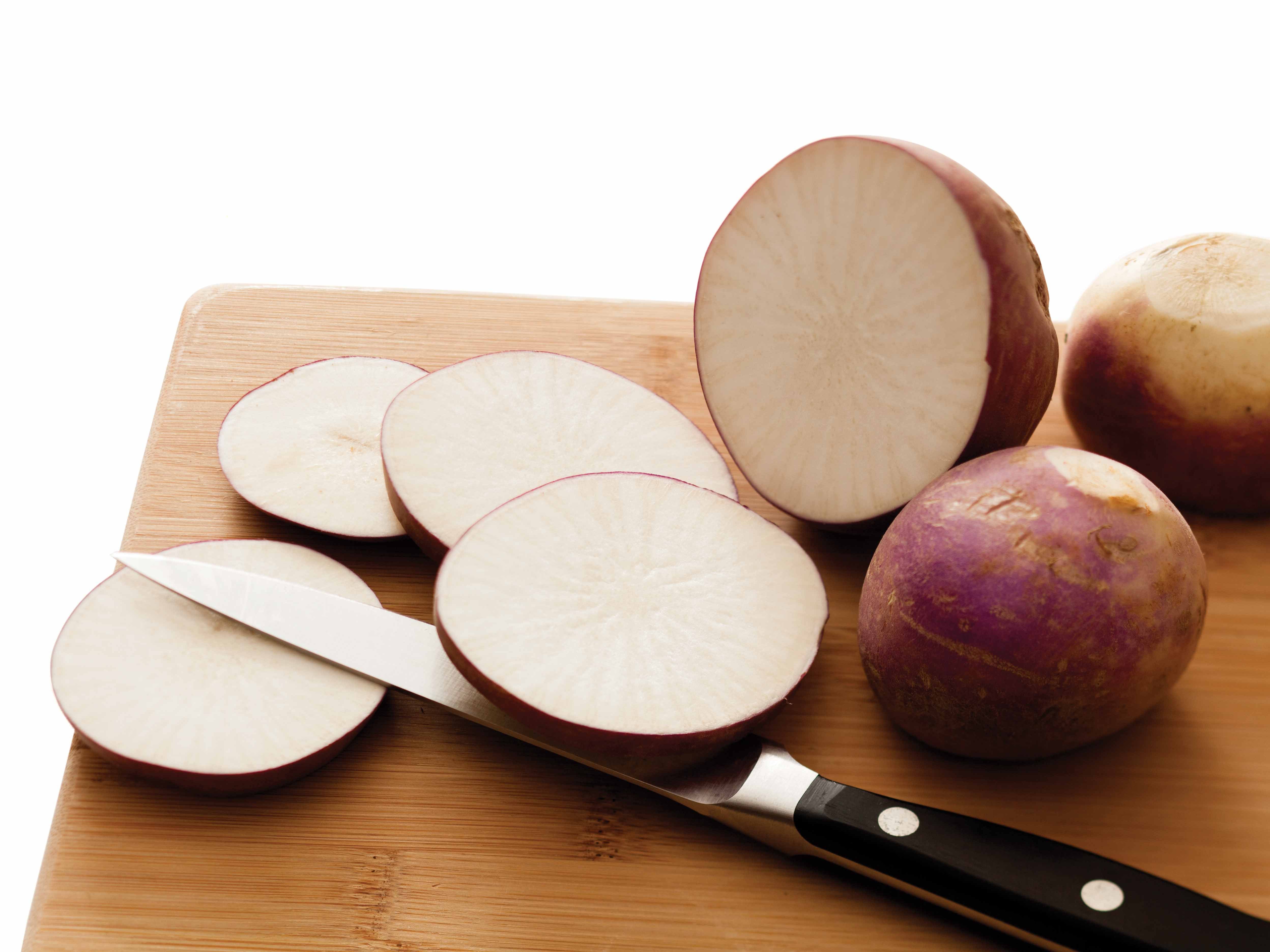The Health Benefits Of Turnips

Photo: John David Becker
What health benefits do turnips have, and what’s the best way to prepare them?
Turnips are a nutrition-packed but often overlooked fall vegetable. A member of the cruciferous family along with broccoli, cauliflower and kale, they are rich in glucosinolates, compounds believed to have antioxidant properties. Oh, and they taste great!
You should prepare and eat both the turnip root (the bulbous bottom part) and the greens. The bulb is high in vitamin C, while the greens are a good source of vitamins C and K, folate and calcium. One cup of turnip bulb and greens provides 35 calories and 8 grams of quality carbohydrates along with 3 grams of fiber, a little more than 1 gram of protein and 14 percent of the dietary reference intake for potassium.
RELATED: Farm To Market Table Salad Recipe
Turnips’ mild flavor lends well to simply washing, cutting and eating them raw, as in a salad; however, most people choose to cook them. One of my favorite ways to enjoy turnip bulbs is to cook until tender and mash (like potatoes). You can simply eat “mashed turnips,” or cook half turnips and half potatoes (new, purple or sweet). You can caramelize the root by sautéing 3 cups of chopped turnip root with water and vegetable (or chicken) stock, plus onions and 1 tablespoon butter. The result is a very rich-tasting side dish your whole family will gobble up for dinner. Similar to any other green, turnip greens can be cooked simply with a little olive oil, salt and garlic or onion.
Lauren Antonucci, R.D., is a board-certified specialist in sports dietetics, three-time Ironman and founding director of Nutrition Energy in NYC.
RELATED – Think Inside The Box: Try Community-Supported Agriculture